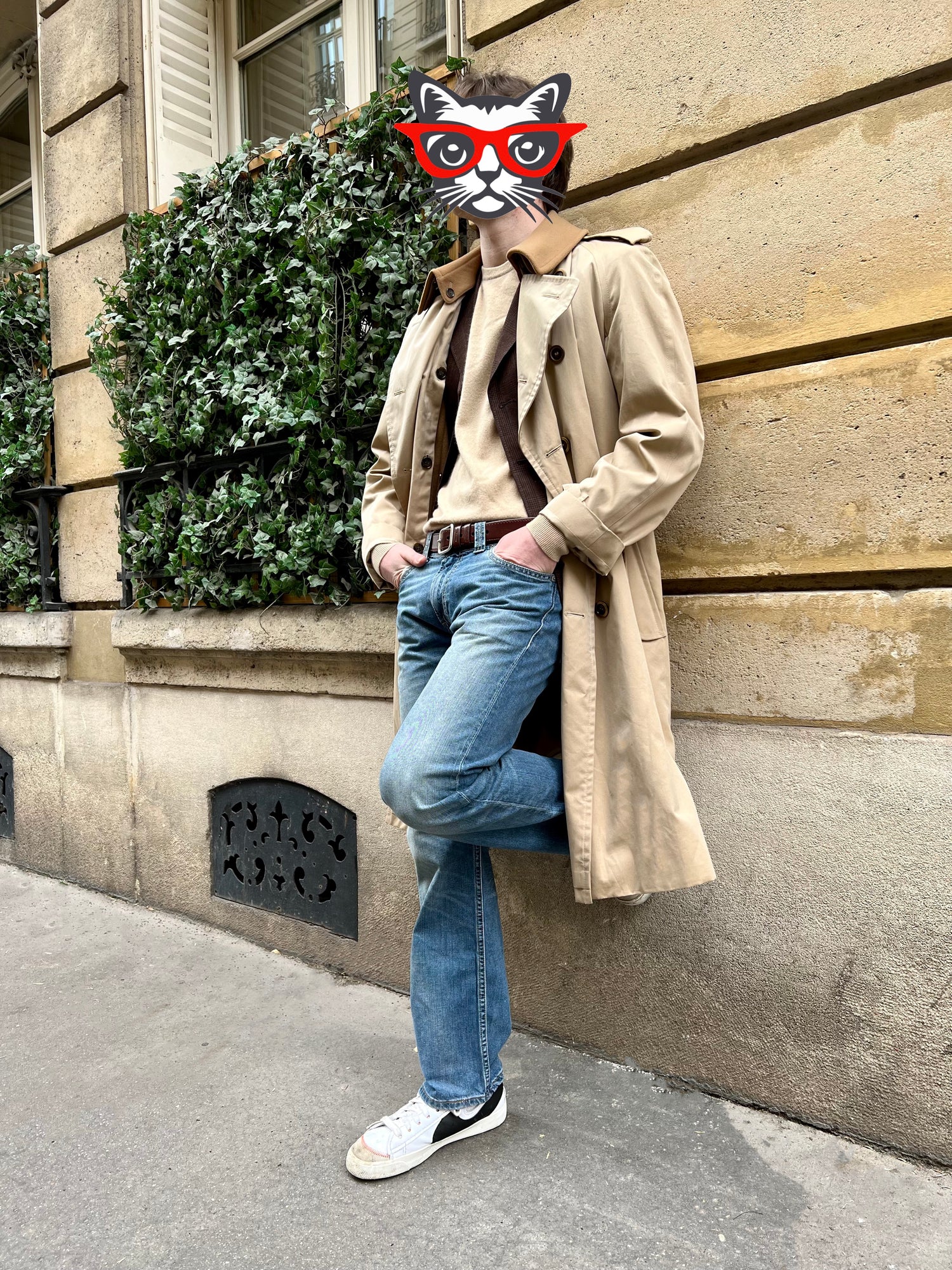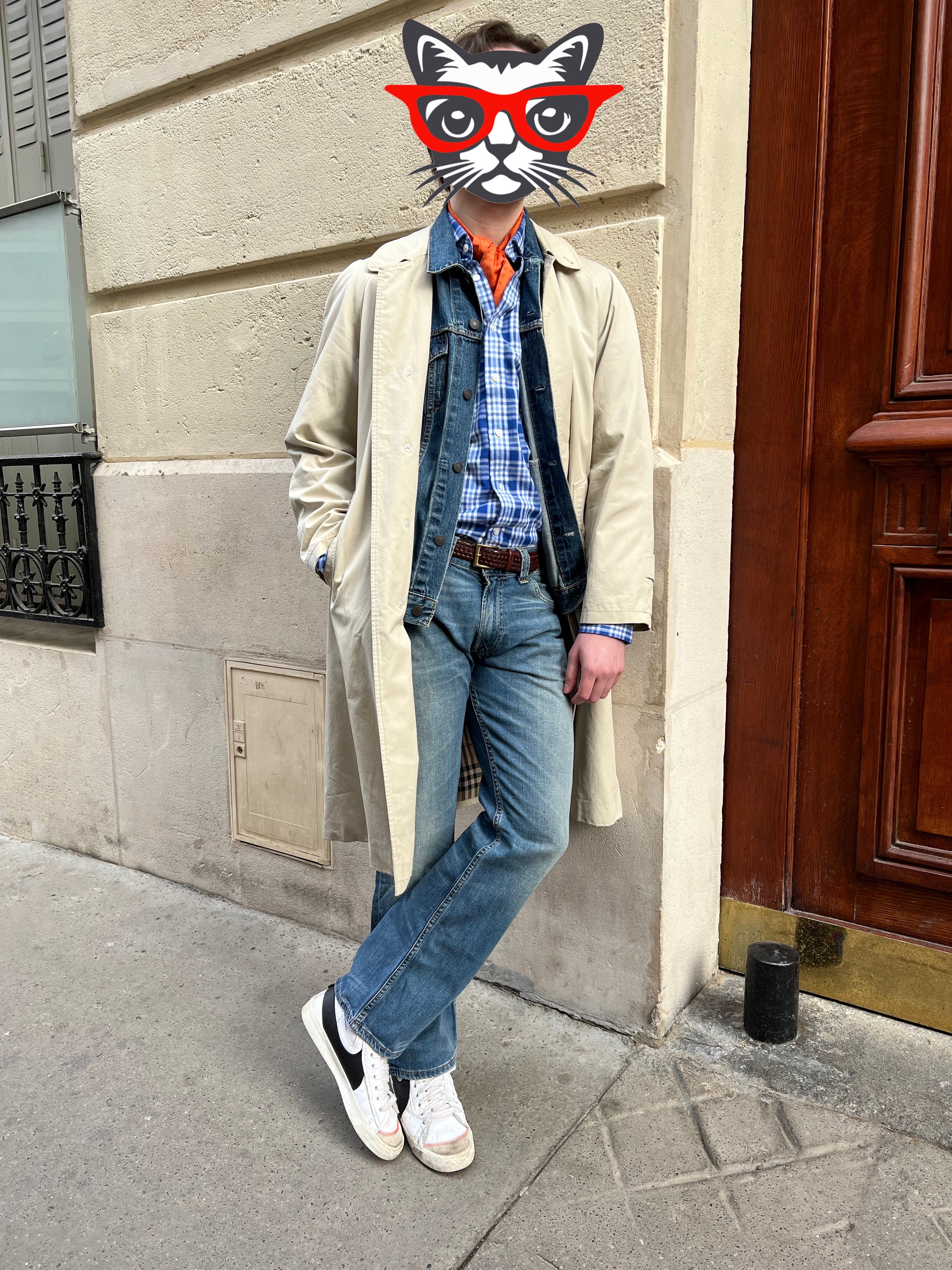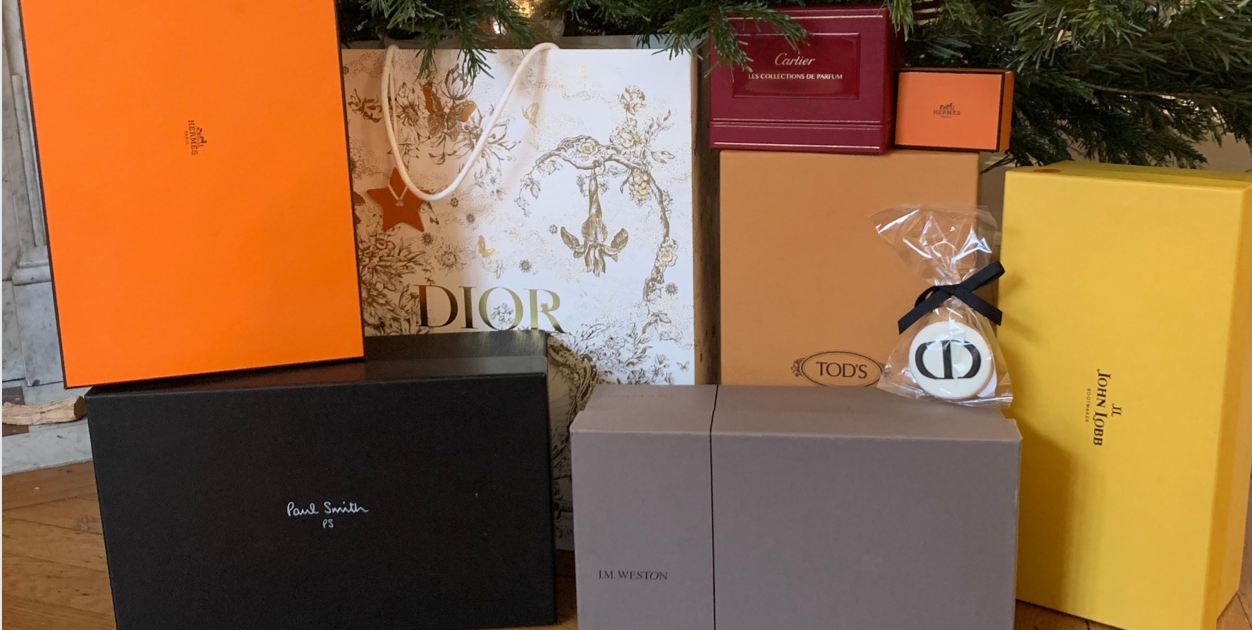The origin of the trench coat or how the early rheumatism of an English apprentice tailor led to an iconic brand and an iconic product!
Etymologically, trench coat means "coat of the trenches." But while the First World War popularized it, the trench coat was born almost a century before the First World War. It was in 1820 that Scottish chemist Charles Mackintosh and British inventor Thomas Hancock (who would become the father of the British rubber industry) created waterproof coats made of rubberized cotton. This garment, designed for the outdoor activities of English gentlemen, continued to be refined, the challenge being to maintain its protective properties while making it less breathable.
John Emary, a tailor from Mayfair, took up this quest and in 1853 produced an improved Aquascutum – Latin for water shield – for his company.
But the great idea of waterproofing cotton or wool yarn rather than finished canvas, the key to a breathable material, came to Thomas Burberry ten years later. Invented in 1879, Burberry gabardine quickly became a hit with the British upper class, whether adventurers or country folk.
While Burberry and Aquascutum trench coats were found in the trenches during the First World War, it was mostly the officers who purchased them with their own money. Cheaper versions were offered to the less fortunate.
At that time, the trench coat , as it was first called in a tailors' magazine in 1916, already looked quite similar to what we know today: it started as a double-breasted, belted jacket that fell below the knee. The belt was equipped with D-rings, allowing accessories to be attached, in this case a saber and grenades. The cape in the back facilitated the drainage of water and the storm flap on the shoulders guaranteed ventilation.
The pockets are deep, the sleeves have adjustable cuffs for added convenience, and the buttons on the collar are supposed to protect the wearer from toxic gases.
Finally, it is possible to choose a lined version, the detachable lining can be used as a blanket. The version of the war trench coat is khaki.
Even though the trench coat was re-enlisted for the Second World War, it was already being adopted by Hollywood: Humphrey Bogart in Casablanca, Audrey Hepburn in Breakfast at Tiffany's...
FOREVER TRENCH
Basically, the trench coat has survived over a century without changing much: the structured shoulders, the military-style buttonhole, the strap belt, the collar that can be turned up, the simple or raglan sleeves (attached to the collar)... Is it this military heritage that means that even today, we feel protected by armor when we slip into our trench coat ?
FOREVER BURBERRY
Inseparable from the history of the trench coat , the Burberry brand is more generally inseparable from a century and a half of English history. Would you like a cup of English fashion?
It all began in 1856 when Thomas Burberry, a draper's apprentice, consulted his doctor for early rheumatism. The doctor advised him against wearing rubber raincoats, which protected against the rain but did not wick away perspiration.
Thomas followed this advice and, within a few weeks, opened his first boutique and was quickly dressing the notables of his region.
The famous gabardine was created in 1880 and patented in 1888. It was inspired by a shepherd who attributed the waterproofness of his jacket to the fact that he used the wool of his sheep, treated during their bath to resist bad weather.
In 1891, a store opened at 30 Haymarket Street in London, which is still the company's headquarters today.
The "Equestrian Knight " and the motto " Prosum " (Latin for "forward") appeared 10 years later, when Burberry was commissioned to equip the British army.
Before leaving the scene, Thomas Burberry introduced the " nova check " in 1924, a black, white and camel Scottish tartan, the signature of the collections and the brand still today.
Supplier to polar expeditions - during his expedition to Antarctica, the Norwegian explorer Amundsen owed his life to his gabardine tent - sponsor of the first man to reach the North Pole, supplier to the army... The Burberry brand has inscribed in its DNA the idea of protection against the hostility of its environment. There will also be a Burberry watch model dedicated to this feat, called the South Pole expedition.
The trench coat is now the symbol of timeless elegance, without ever losing a little adventurous dimension, whatever the adventure: Humphrey Bogart facing his collaborators in Casablanca, Audrey Hepburn facing the harshness of life in Breakfast at Tiffany's, Inspector Colombo facing crime.
" Give me my Burberry ," with these words, King Edward VII gave the Burberry trench coat the royal consecration of becoming generic.
Burberry is indeed a royal brand: official supplier to the Queen since 1955, Prince Charles granted it the Royal Warrants in 1989.
In 1955, Burberry was acquired by the Great Universal Street group, and the following decades were extremely profitable thanks to the proliferation of licenses. However, they led to the brand becoming commonplace.
In 1998, the new director, Rose Marie Bravo, set up the renewal team. How to regain a luxury image while remaining faithful to its capital? She made Burberry a textbook marketing case: a new stylist promoted to artistic director, a new communications team around fashion stars (Fabien Baron and photographer Mario Testino), star models and muses, but also the cutting of numerous licensing contracts to regain control of this precious asset of the brand image.
Burberrys becomes Burberry, the collections are repositioned:
- Prosum, the most high-end
- Burberry London, more mainstream
- Thomas Burberry became Burberry Brit, the youngest.
Fashionable for over 100 years, the Trench Coat and the "Nova Check" pattern are not about to leave the scene. Buying second-hand doesn't even need to invoke vintage arguments to be a good idea. A Burberry trench coat today costs over 1,000 euros to buy in store, at Le Beau Gustave , beautiful pieces in perfect condition,
FOCUS ON THE “BURBERRY CHECK”
Originally designed as a lining, the tartan made a splash when the manager of the Malherbes boutique, finding his window display too beige, showed a coat inside out and it met with enthusiasm from customers.
A bourgeois symbol, but regularly reclaimed by groups such as the rap-loving "Chavs" in the 80s, it constantly oscillates between these two poles: the archetype of classicism and the paragon of hype.
The Supreme/Burberry collection released in March 2022 has once again shifted the focus to the trendy side.
A tartan is basically a lightweight woolen fabric whose bright colors, arranged in squares, are specific to the different Scottish clans. While recognizing a real pattern from a fake can sometimes be a bit like spot the difference, here are some pointers:
- 4 thin red lines ( 2 horizontal & 2 vertical)
- 3 vertical dark lines, as well as 3 horizontal gray lines.
Together, these lines form a checkered pattern on a beige background.
But it is wiser to recognize a fake Burberry to rely on the quality of the product.



